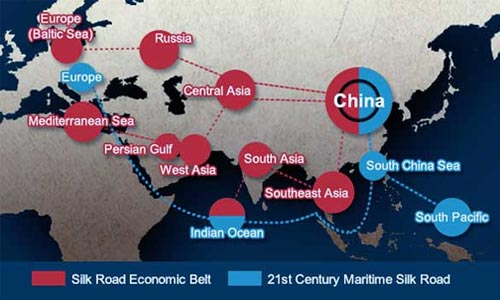Recently Dr. Mariam Safi, founder and executive director of Afghan think tank DROPS, published her research report Integrating Afghanistan into the Belt and Road Initiative: Review, Analysis and Prospects. It is the first report by an Afghan scholar that systematically focuses on the Belt and Road Initiative (BRI). My colleagues and I have read it through. I feel Madam Safi has done a lot of work with an independent mind. Her investigation has been thorough and her argument robust. As the first person to try tomato, she has filled a gap in the research of BRI and blazed a new trail for future researchers.
At the release ceremony, Dr. Safi said that Afghan people from all walks of life appreciated the China’s invitation to jointly construct the BRI. While the Afghan situation is still not peaceful, the move gave Afghanistan a ‘cardiotonic’. It is aligned with the fundamental interests of Afghanistan and its people and will be conducive to Afghanistan fully tapping its development potentials and becoming self-supporting once again as the Heart of Asia, Eurasian crossroads and a trade hub along the Silk Road.
I agree with her. The BRI first and foremost demonstrates the Chinese goodwill and sincerity. In the Chinese and Dari languages, there is a shared proverb: a single flower does not make spring. Through this regional economic cooperation initiative, China hopes to provide infrastructure and connectivity, a global public good in high demand, and share the fruits of its own development with neighbors, to fulfill its major country diplomacy with Chinese characteristics.
The BRI is designed to carry forward the cause of the ancient Silk Road and forge ahead into the future. A pearl on the ancient Silk Road, Afghanistan made important contributions to it and to the development of Chinese cultures. The BRI will restore youth to the ancient route and return to the Afghan people the hope for peace and the capacity for development.
The BRI is the world’s largest project for people’s well-beings. Its central goal is common development whereby everyone makes money and has a good life. In the past five years since its launch, the volume of trade in goods between China and the relevant countries has exceeded 5 trillion US dollars, with an annual growth rate of 1.1% against the backdrop of world trade decline and negative growth. Chinese direct investment in those countries has exceeded 70 billion dollars, with an annual growth of 7.2%. The 82 economic and trade cooperation zones, constructed by China all over the world, have paid over 2 billion dollars in taxes and fees to the host countries and created more than 200,000 local jobs. Because of this, more and more countries are joining the BRI. Over a hundred countries and international organizations have signed about 120 cooperation agreements with China in this regard.
The BRI is closely linked to the development of a community of shared future for mankind and a new model of international relations. The initiative encompasses land and maritime cooperation through both official and people-to-people channels. We believe that the BRI should be jointly built through consultation to meet the interests of all and by pursuing high quality, following high standards and arriving at high levels for all projects. The initiative aims at policy coordination, infrastructural connectivity, unimpeded trade, financial integration and people-to-people bonds. Priorities are given to infrastructural connectivity, industrialization, development of energy resources, economic cooperation and trade, financial cooperation, cultural exchanges, ecological protection and maritime cooperation. Efforts have been redoubled to construct six economic corridors, including China-Russia-Mongolia, New Eurasia Land Bridge, China-Central Asia-West Asia, China-Pakistan, Bangladesh-China-India-Myanmar and China-Indochina Peninsula, and to advance three-dimensional connectivity networks composed of railways, roads, waterways, air routes, pipelines and information highways.
For a landlocked country at the heart of the Eurasian continent like Afghanistan, the BRI offers not only roads in all directions but also unprecedented attention and investment by the international community on its development. By making the best use of its advantages in geography, resources, demography, connections and international attention and bypassing any disadvantages, Afghanistan may play an active and important role and make considerable gains in the development of the BRI, which thus offers a pathway to economic self-supporting and catching up.
Afghanistan was among the first to explicitly support the BRI, sign the relevant memorandum of understanding and establish relevant security cooperation mechanism with China. The Chinese side attaches importance to and appreciates the positive attitude of Afghan leaders, government departments and people from all walks of life and regards Afghanistan as an important partner in BRI and for early harvest.
Home » Opinion » Belt and Road Initiative Puts Impetus to Afghan Peace and Development (Part 1)
Belt and Road Initiative Puts Impetus to Afghan Peace and Development (Part 1)
| Liu Jinsong

